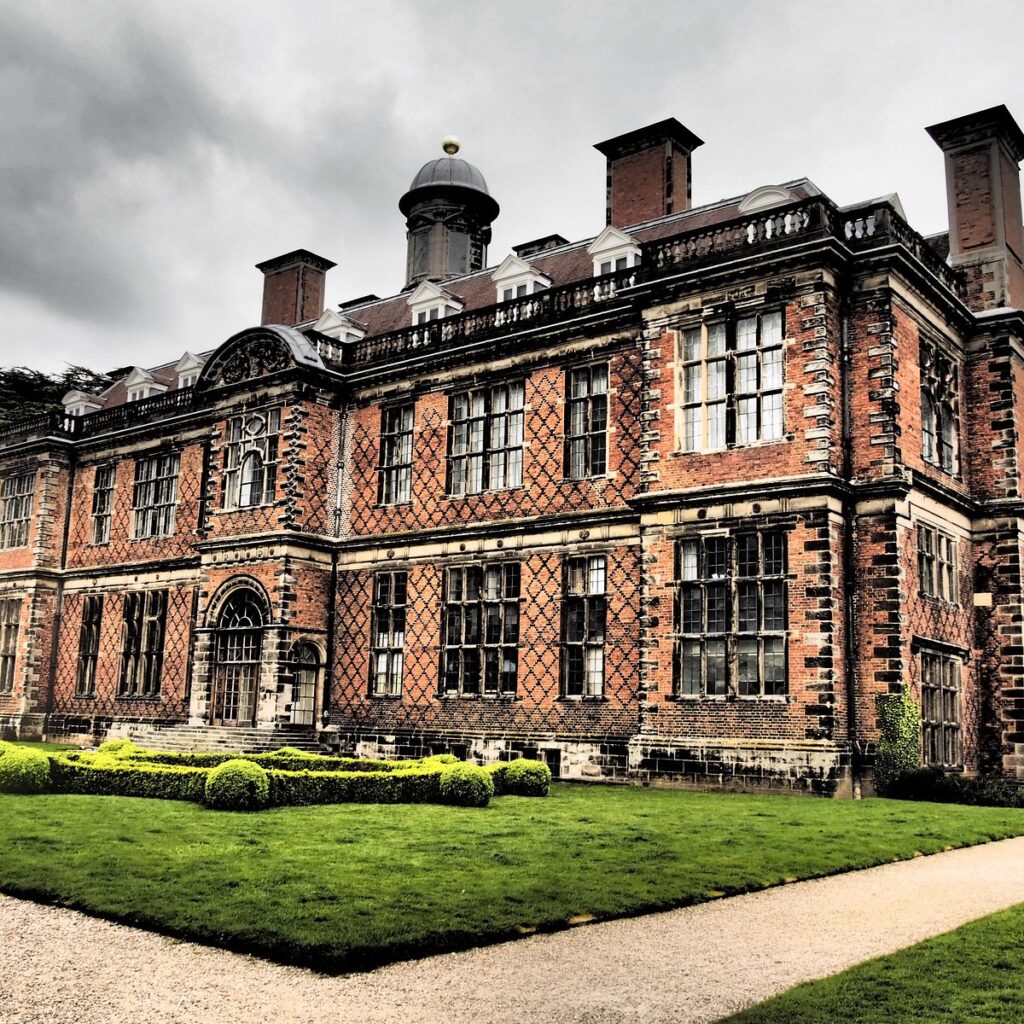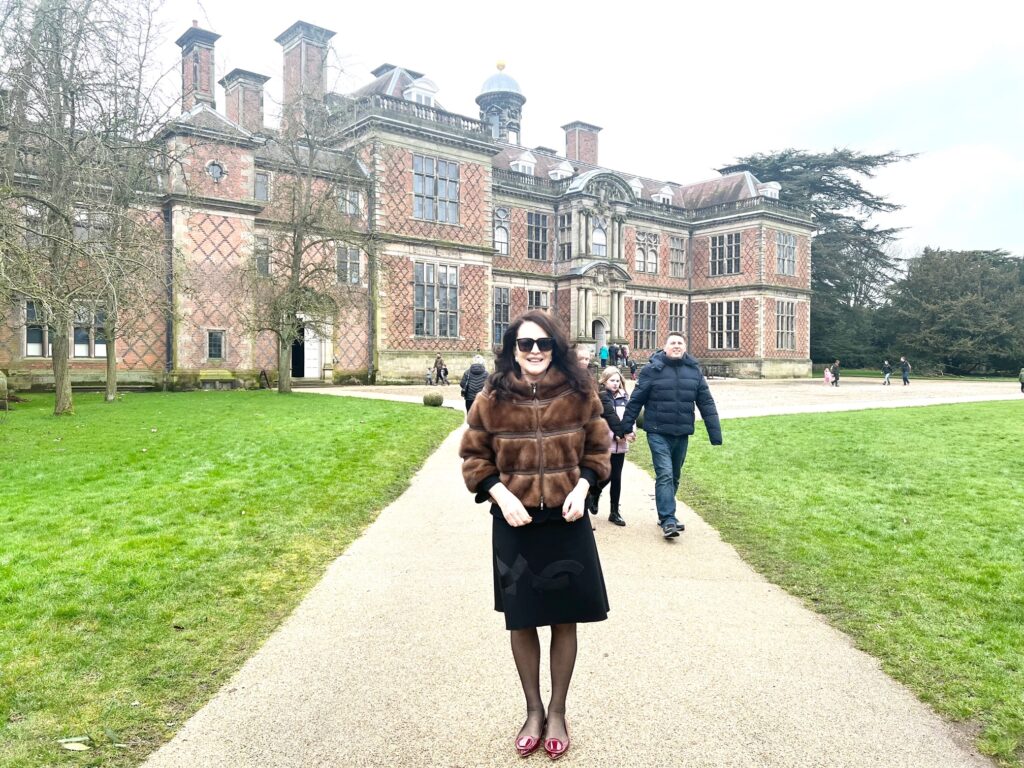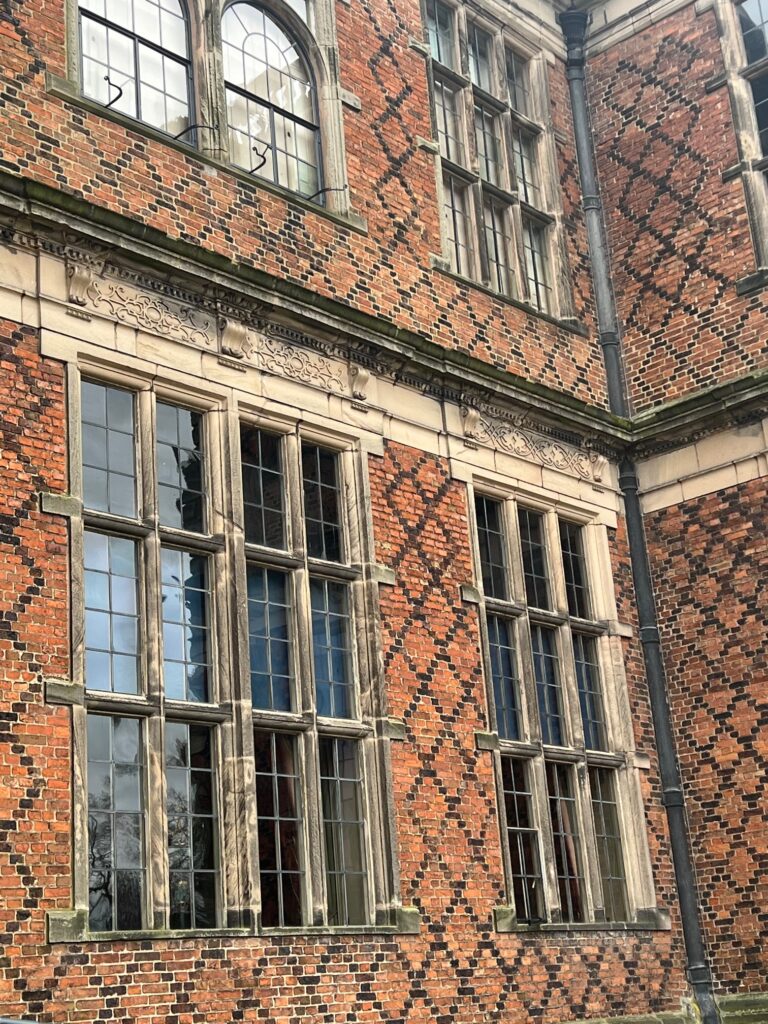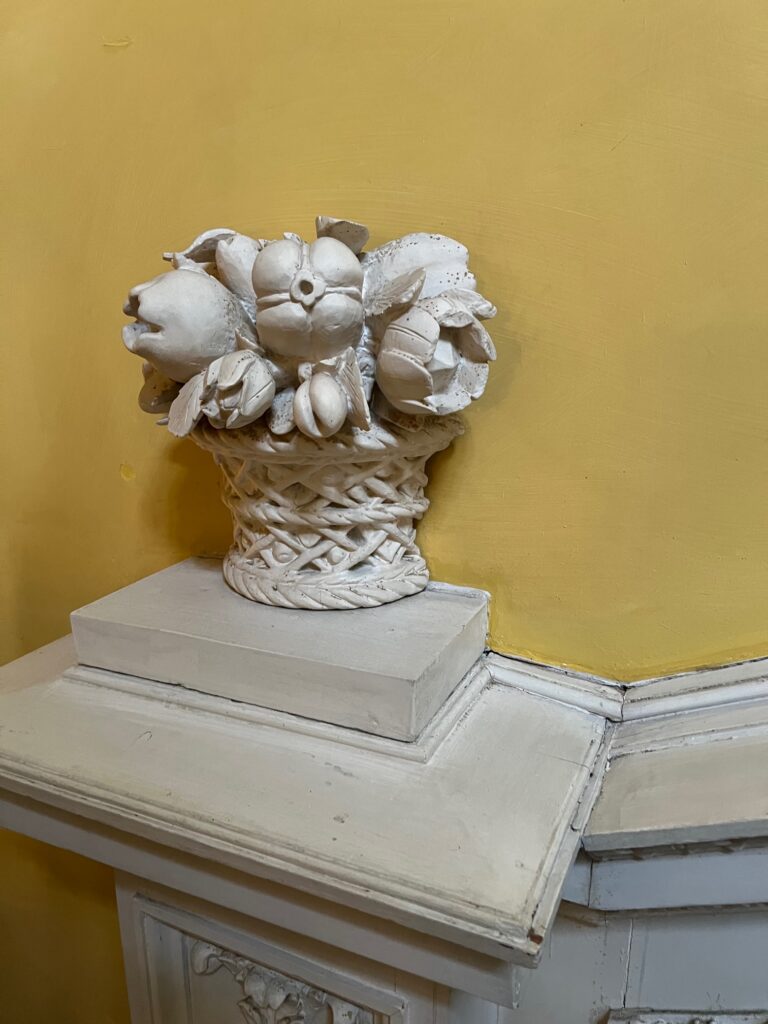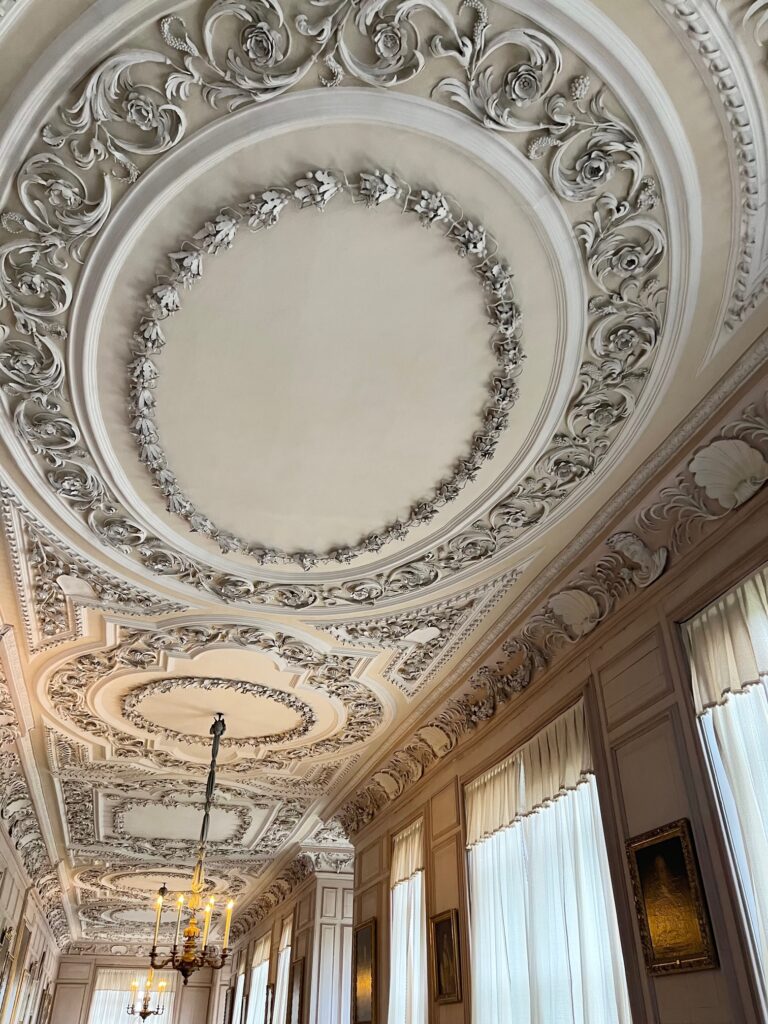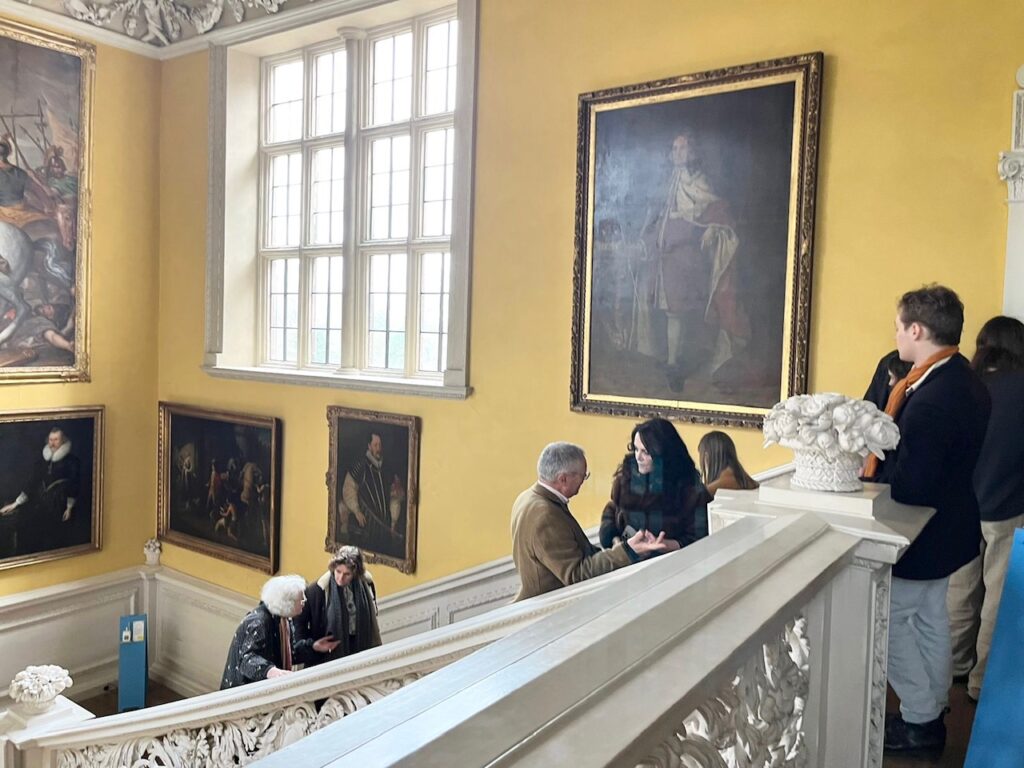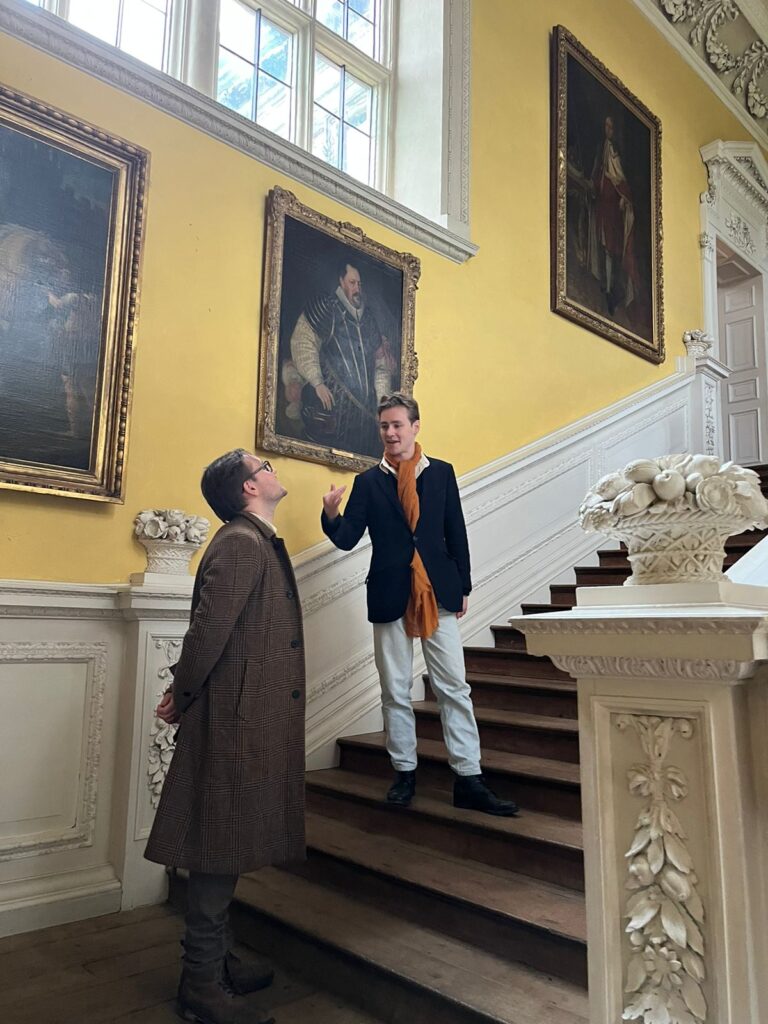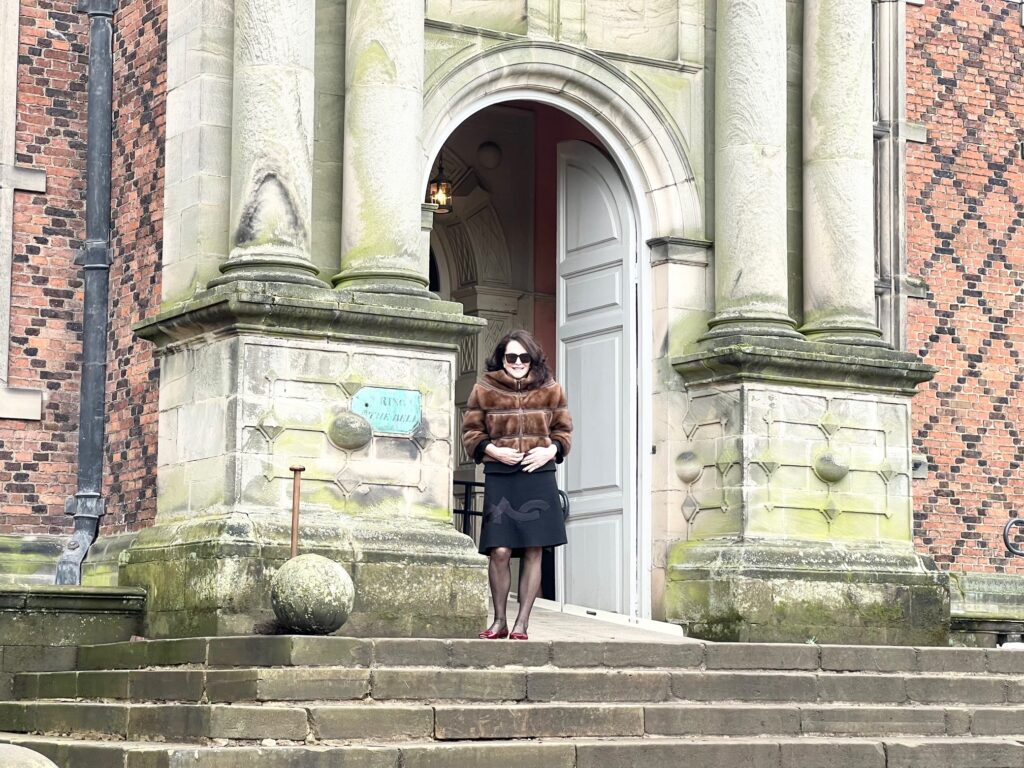
To us Americans, there is a certain allure to the English Country Houses that is unmatched. It has been synonymous with the best lifestyle of the rural countryside, and the embodiment of spectacular architecture, interiors, gardens, and furnishings. The English Country House represents the glory of the past, with each of these legendary homes containing amazing generational stories of the families who lived in them. They could not continue on this trajectory because of increased taxation and the effects of World War II; many were demolished, and others were gifted out and managed by the National Trust. I was thrilled to spend last weekend in Sudbury Hall in Derbyshire, one of the best houses built during the Restoration period of the 17th century, where the great-great-great grandparents of my family members called home, and which famously appeared in the BBC series adaptation of Jane Austen’s Pride and Prejudice. The occasion for this visit was a book launch, and it marks the first time that I visited a Jacobean estate.
Sudbury Hall was the home of the Vernon family; it was built between 1660-1680—shortly after the restoration of King Charles II—by George Vernon, who used his newly found wealth from marrying Northamptonshire heiress Margaret Onley to build this grand country house, and fortunately kept accounts of the building project. Since there is no record of any payment to an architect, historians believe that he designed Sudbury Hall himself. I learned that in the Victorian years of the mid-19th century the home was leased for three years by Queen Adelaide, the widow of William IV of the United Kingdom, leading to an entire wing being added in the latter years of the 19th century. It was in 1967 that it was sold along with its contents to the National Trust, though the family still owns the grounds.
Two of the most memorable features in this building are the Great Staircase and the gorgeous Long Gallery. The staircase was designed by Edward Pierce dating from 1676, and it is considered to be one of the finest Restoration staircases in Britain. It is noted for its white-painted balustrade with luxuriant, carved foliage. I could not help but take a video walking down that magnificent hall and imagining what it was like living there in the 17th century. The overmantel was done by Grinling Gibbons, the Anglo-Dutch sculptor and wood carver known for his work in Windsor Castle and Hampton Court Palace. I spent the weekend in the English countryside, getting a glimpse into the life behind the magnificent brick façade typical to Derbyshire.

